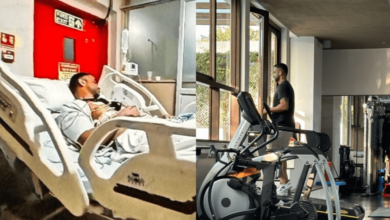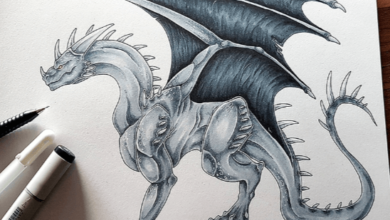Q&A with Aaron Saunders, VP at Boston Dynamics, on teaching robots to dance and how that informs the company’s approach to robotics for commercial applications(Evan Ackerman/IEEE Spectrum)

Boston Dynamics’ robot, Atlas, is designed to perform tasks like picking up objects and navigating rough terrain. But can robots be trusted to be independent, self-sufficient agents? We believe robots will have an important role in the future of work because we believe robots can teach each other. Robots can learn from each other and use their experiences to improve their ability to perform tasks. This is social learning, and our company is dedicated to exploring how our robots might one day learn from each other. The Boston Dynamics group is working on building their first production robot to show the world exactly how the human dance moves they’ve learned are translated to motion and control. While the robots are still in development, the team hopes to build a consumer robot that will perform various dance routines with the goal of eventually bringing those routines to market.
Who is Aaron Saunders, VP at Boston Dynamics?
Saunders’ background is in robotics, artificial intelligence, and machine learning, and he started his career as an engineering manager at IBM and joined Boston Dynamics in 2012. He previously held a management position at Google and was on the board of directors at MIT Institute for Quantitative Analysis of Social Systems. Saunders was hired in February 2014 to work in product strategy, sales, and operations at Boston Dynamics. He has nearly ten years of experience in product management, marketing, and engineering at companies including IBM and Microsoft.
Why Teach Robots to Dance at Boston Dynamics?
Boston Dynamics released a short clip of its new robot, Atlas, demonstrating how the machine moves, including a quick waltz with a human partner. In the video, Atlas shows its impressive ability to smoothly balance itself and move forward or backward. The company has been working on creating robots that can interact with humans. A combination of Atlas’ impressive movements and the company’s previous creation, Big Dog, could lead to robots that eventually help with disaster relief and search-and-rescue efforts.
How is Boston Dynamics Using Robotics for Commercial Applications?
Boston Dynamics is a leading company in developing and applying advanced robotics technology. In 2014, Boston Dynamics unveiled its flagship product, Atlas, a humanoid robot. The company wants to use robotics to solve some of the world’s biggest problems. Robots could provide search and rescue in disaster zones, assist with physical rehabilitation, and assist military and civilian law enforcement personnel.
Conclusion
In conclusion, The new dancing robots from Boston Dynamics demonstrate the potential for machine learning to enable robots to perform complex tasks such as navigating stairs, balancing, or walking through a narrow space. These new capabilities are made possible by perception, localization, planning, and control advances. They are also a testament to the power of open-source software development. The Boston Dynamics group is working on building their first production robot to show the world exactly how the human dance moves they’ve learned are translated to motion and control. While the robots are still in development, the team hopes to build a consumer robot that will perform various dance routines to bring those routines to market eventually.
FAQs
1. What is Boston Dynamics’ approach to teaching robots to dance?
We are using the same system that we use to teach robots to walk.
2. Why is Boston Dynamics developing robots for commercial applications?
Boston Dynamics is developing robots for commercial applications because they are in high demand. The industry has been growing steadily for the past decade, and we expect this trend to continue.
3. Why did Boston Dynamics start working with dance?
We started working with dance because it will help robots learn to move more naturally and improve their ability to interact with people.
4. How does dancing inform Boston Dynamics’ approach to robotics?
Dancing helps robots learn to move more naturally and improve their ability to interact with people.





